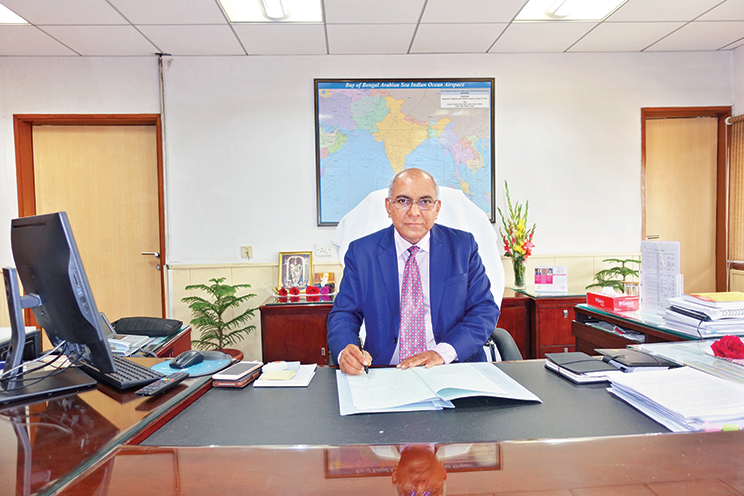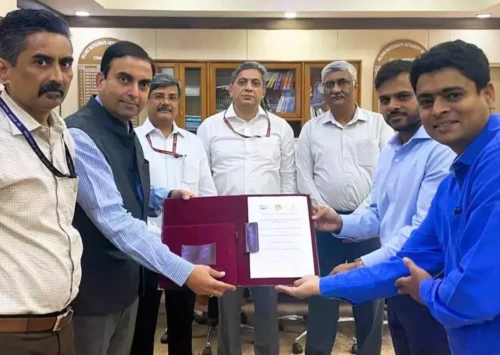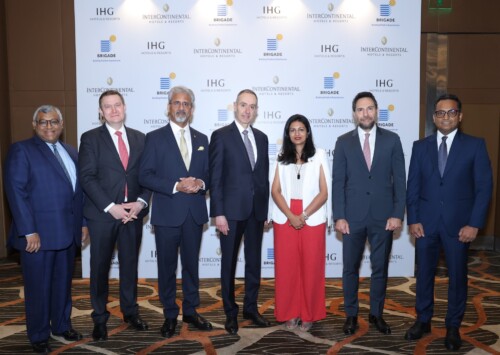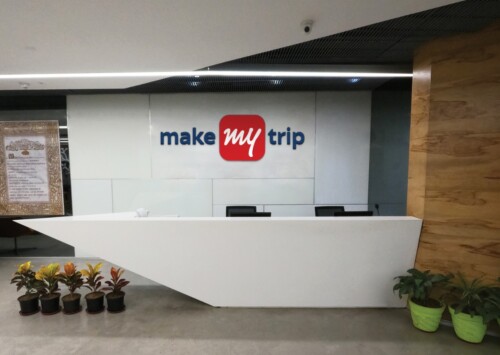A K Dutta
AIBM
April - June 2018
Airports Authority of India’s (AAI) A K Dutta talks about the various initiatives taken by the organisation regarding Air Navigation Services (ANS) in India’s booming aviation sector.
India is likely to become the third largest aviation market by 2020. What are the emerging challenges in Air Navigation Services as a result of that?
The immediate challenges for AAI as an Air Navigation Service Provider (ANSP) are to manage the exponential growth in traffic safely. These include reducing the impact of aircraft noise on local communities; ensuring reduced fuel burn by improving flight profiles; supporting new generation aircraft by modernising Air Traffic Management (ATM) systems; possibly increasing the use of drones; transitioning to a trajectory-based concept where present and intended aircraft positions will be known with higher degrees of accuracy; and to select and absorb the right technologies.
Where does AAI stand as an ANSP with respect to implementing International Civil Aviation Organization’s (ICAO) Global Air Navigation Plan (GANP)? How do you plan to meet Aviation System Block Upgrade (ASBU) targets?
The AAI has developed ANS strategic plan in line with ICAO’s GANP for the period 2016-2030, which provides guidance to increase the capacity and improve the efficiency of the global civil aviation system. The GANP applies a rolling 15-year strategic methodology to support a globally harmonised air navigation system. It guides states in leveraging existing technologies and anticipating future developments based on operational objectives agreed by the state in consultation with industry. This is done through a series of Aviation System Block Upgrade (ASBU), a methodology that allows states to advance their air navigation capacities based on their specific operational requirements.
India has already implemented or commenced the implementation of a number of the technologies and practices contained in Block 1 of ASBU (up to 2019). These include:
Air Traffic Flow Management (ATFM) and Collaborative Decision Making (A-CDM) for reduction of delays in air and on ground
Performance Based Navigation (PBN) routes and procedures for improving efficiency and safety of aircraft movements
Air Traffic Services (ATS) surveillance through Automatic Dependent Surveillance – Broadcast (ADS-B) in addition to radar to provide coverage in entire continental airspace of India.
ADS-Contract and Controller Pilot Data Link Communications (CPDLC) in oceanic airspace
ATS Inter-Facility Data Link Communications (AIDC) for seamless exchange of ATS data between ATS units instead of using Direct Speech Circuit (DSC) using voice communication
Civil-military coordination to use more and more defence airspace for civil aircraft, when not used by military
How big is the Indian airspace, including oceanic airspace that is delegated by ICAO and how is AAI providing air traffic services in the airspace?
The AAI provides ATS over Indian territorial airspace and also over Bay of Bengal, Arabian Sea and Indian Ocean Region, which is about 2.8 million sq nautical miles. The entire Indian continental and oceanic airspace is being controlled by seven Area Control Centres, three Oceanic Control Centres and eight Lower Area Control Centres.
Communication and surveillance are the two main components on which ATS is dependent. The AAI has installed Very High Frequency (VHF) with extended range transmitter/receiver for direct communication between aircraft and Air Traffic Control (ATC). India also has remote control air/ground communication stations installed at Port Blair and Agatti to extend VHF coverage over the Oceanic airspace. Advanced automation systems at all major airports supported by surveillance inputs from multiple radars and ADS-Bs have also been established with the installation of 21 ADS-B ground stations in India. Along with that, AAI also has ADS-C and CPDLC installed at four metros for data link communications with aircraft flying over the oceanic airspace.
How do you view Indian aviation’s track record with safety standards and the reforms that India needs to undertake?
The ANS initiatives have definitely yielded results in terms of enhanced safety and efficiency in addition to considerable fuel savings, reduction in emission and improved on-time performance. The enhanced safety is reflected in the data on aircraft separation infringement that has come down to 0.99 per 100,000 aircraft movements.
Specific measures taken by AAI include harmonised upper airspace in Chennai and Kolkata FIRs; implementation of Advanced Surface Movement Guidance and Control System (ASMGCS) at major airports; ensuring seamless surveillance coverage through ADS-B; implementation of ATFM in six major airports; automation system that reduces the stress levels of air traffic controllers; enhanced skill levels of the controllers through the simulators; and implementation of Class C airspace that is more secure than earlier Class D airspace.
Some reforms that are currently underway include, upper airspace harmonisation in Mumbai and Delhi FIRs; implementation of ATFM at all airports/airspace; implementation of Futuristic Telecommunication Infrastructure (FTI); and Performance Based Communication and Surveillance (PBCS).
How will implementation of the concept of Flexible Use of Airspace (FUA) help in improving airspace utilisation?
Implementation of the concept of FUA will improve airspace utilisation drastically. Hitherto inaccessible air-spaces under the control of military will be opened up for use by civil aircraft in the form of direct conditional routes and the military will have access to more airspace. Most importantly, idling of airspace will be reduced. Airspace will be allocated to the users on need basis only.
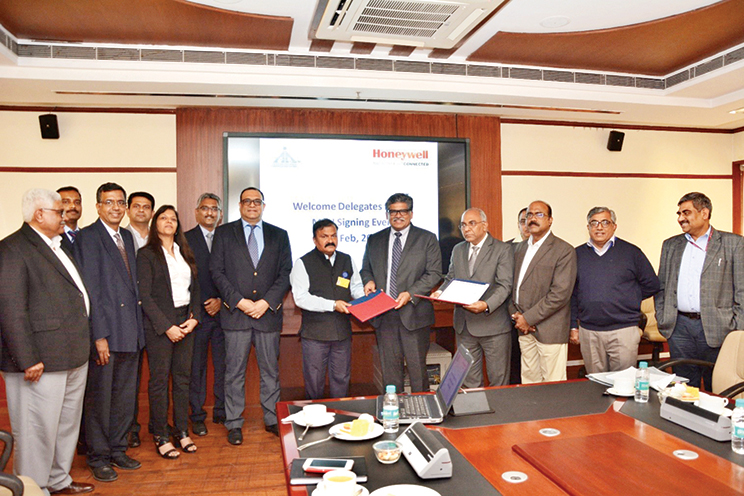
AAI signed a Memorandum of Understanding (MoU) with Honeywell Technology Solutions Lab Pvt Ltd to develop a long term collaboration in the field of aviation technologies, systems and procedures
What is FTI and how it is going to change the communication network in AAI?
The AAI is implementing FTI to accomplish a common infrastructure to meet operational and mission critical voice, data and video requirements, obtain the required telecommunication services at the desired performance levels and offer a reliable and secure communication network. FTI would ensure a single point of contact for service, resulting in a more robust, secure and flexible telecom infrastructure to address Communication Navigation Surveillance (CNS)/ATM technological upgrades including radar networking, VHF networking, ADS-B, ATFM, aeronautical telecommunication network and systemwide information management.
Is there enough focus on building infrastructure to handle growing capacity and train skilled manpower to handle the growing challenges?
Yes, CNS/ATM infrastructure is being constantly upgraded to enhance airspace capacity in the face of growing traffic. The AAI as ANSP has taken up CNS/ ATM infrastructure up gradation with focus on enhancing capacity of airspace and ensuring safety, efficiency, costeffectiveness of aircraft operations with environmental benefits on a long-term and sustainable basis.
How do you think the alarming number of air safety violations can be reduced?
I would say, technology and effective oversight is the solution. While AAI has undertaken a number of initiatives to address the issue, the regulator has already placed an effective oversight mechanism and Safety Management System (SMS) for all service providers/ organisations engaged in commercial operations, maintenance of aircraft, aerodrome operations, and provision of air traffic services.
In recent months India had undertaken several technological interventions such as satellite based navigation and GPS Aided Geo Augmented Navigation (GAGAN) system for smoother air navigation. How will it improve safety?
GAGAN is designed to provide additional accuracy, availability, and integrity necessary to enable users to rely on GPS for all phases of flight, from en route through approach for all qualified airports within the GAGAN service volume. GAGAN will also provide the capability for increased accuracy in position reporting, allowing for safer and high-quality ATM. We have started the next move to establish GAGAN procedures at all suitable runway ends that will allow Global Navigation Satellite System (GNSS) based approaches for suitably equipped aircraft. GAGAN can be used as a primary means of navigation from take off through category I precision approach. In the aviation field, GAGAN operations will support more direct air-routes, reduced separation standards, reduced fuel consumption and improved safety.
Many new Greenfield airports are coming up in future. What is your action plan to provide CNS/ATM System infrastructure at these airports?
We have a robust plan in place to provide required CNS/ATM system infrastructure at all the Greenfield airports as per the regulatory and operational requirements of that airport. As per the Ministry of Civil Aviation (MoCA) guidelines, we have entered into a ‘CNS/ATM Agreement’ with the respective airport operator in case of Public-Private Partnership (PPP) airports and work in close coordination with them, so that necessary systems, procedures and regulatory approvals are in place coinciding with airport operations.
We have successfully followed this strategy while providing ANS infrastructure at Bengaluru, Hyderabad, Cochin and CNS/ATM infrastructure for third runway at IGIA in the past. For the Kannur and Pakyong (AAI) Greenfield Airports, work for the provision of ANS infrastructure is progressing satisfactorily and necessary systems will be available before airport commissioning. Similar strategy will be followed for provision of ANS infrastructure for Navi Mumbai, Mopa, Bhogapuram and other upcoming Greenfield airports.
What is your plan to modernise and augment ANS infrastructure in next five years?
AAI have a capital expenditure plan outlay of more than INR 25 billion to modernise and augment the ANS infrastructure in the next five years. To accommodate demand of ANS infrastructure, AAI is constructing new ATS complex at almost all the major airports.

